The Role of Content Marketing in SEO & PPC: How Great Content Drives Better ROI
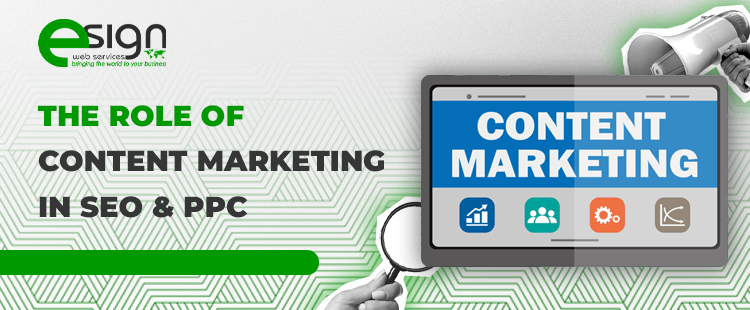
Key Takeaways
- Content connects SEO and PPC, creating consistency, relevance, and measurable growth across all digital touchpoints.
- A well-planned SEO content strategy builds authority, solves problems, and earns trust by aligning with Google’s E-E-A-T.
- Strong PPC ad copywriting hooks attention, matches intent, and converts when supported by seamless landing pages.
- SEO + PPC integration fuels a feedback loop where insights from one channel strengthen the other for better results
- Storytelling and funnel-first content engage audiences emotionally and guide them from awareness to conversion.
In the noisy digital marketplace, brands often chase visibility through technical SEO or high-spend ads—but forget the thread that truly ties it all together: Content. Whether it’s a detailed blog post or a compelling ad headline, words move people. That’s where the power of content marketing for SEO and PPC lies. It’s not about choosing between organic and paid—it’s about using content as the strategic bridge between them. Well-planned content builds digital visibility, creates relevance, and ensures consistency across every touchpoint.
Imagine a user finding a how-to blog on your site one day, and two days later, clicking your retargeting ad with a special offer. That journey wasn’t luck; it was storytelling in motion. When every piece of content has intent, your marketing stops being guesswork—it becomes a system that continually attracts, nurtures, and converts, at scale, with consistency, and with measurable impact and lasting growth.
SEO Content Strategy: Not Just Rankings—Relationships
Modern SEO isn’t just about keyword placement or acquiring backlinks. It’s about crafting authoritative, intent-driven content that earns trust, solves problems, and attracts quality links naturally. A strong SEO content strategy uses blogs, landing pages, and product descriptions to guide users along their path—not push them. It’s about showing up with answers at just the right moment. For instance, a post like “How to Improve Local SEO in 2025” doesn’t just rank—it attracts the exact users searching for help.
Google’s algorithm now values topical authority, E-E-A-T, and user experience—all of which hinge on the quality of your content. Instead of stuffing keywords, smart marketers build topic clusters, add schema markup, and link internally to strengthen SEO signals. But here’s the secret: when your SEO content also aligns with paid campaigns, it becomes a launchpad for full-funnel conversion. That’s the kind of conversion-driven content that amplifies both channels with one effort.
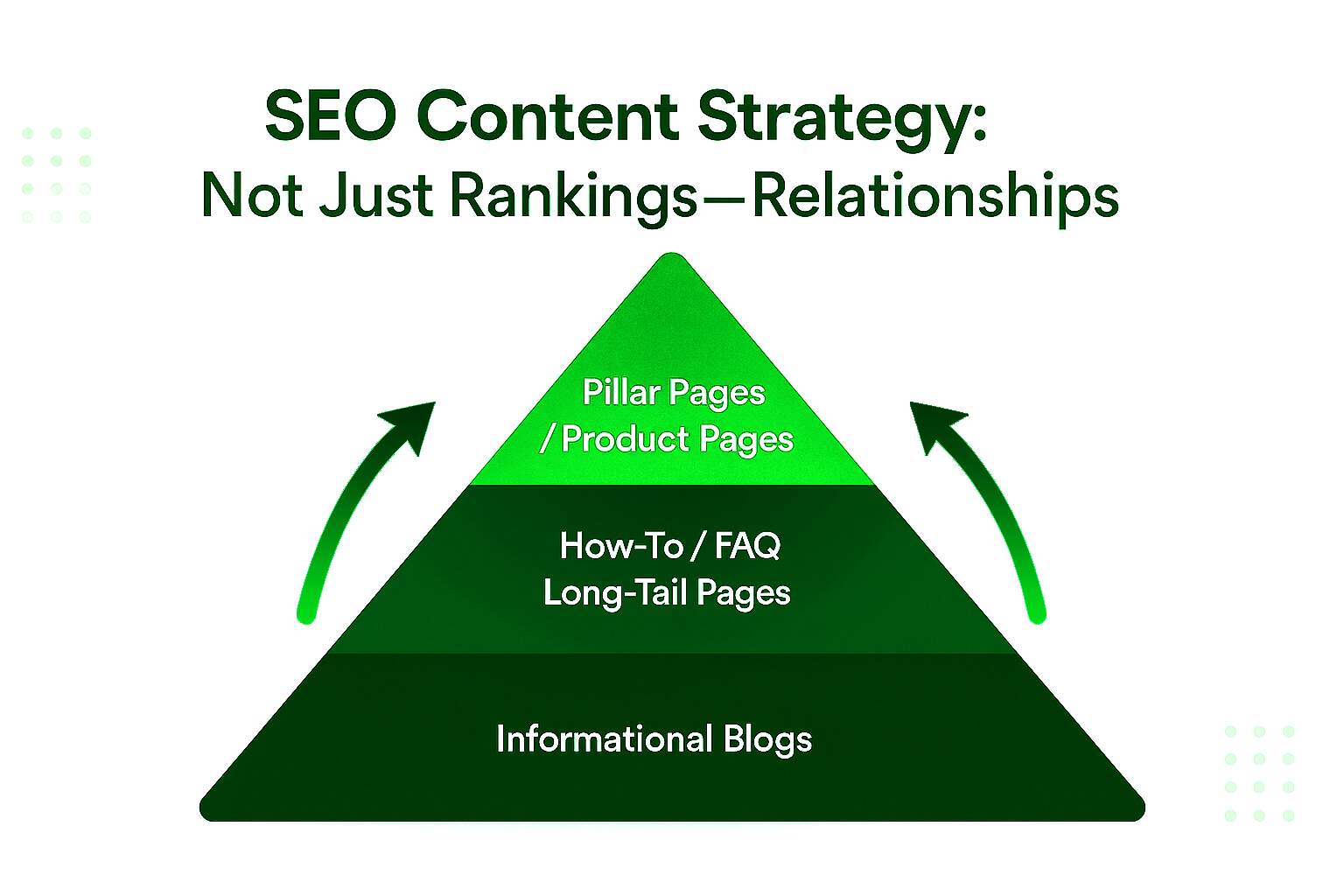
PPC Ad Copywriting: Turning Scrolls into Sales
If SEO is your slow-burn strategy, paid search is your ignition switch—and it all starts with copy. In a sea of ads, only the ones with punchy, value-rich content get clicked. That’s why great PPC ad copywriting is an underrated art. It combines psychology, clarity, and performance into a single phrase. A high-converting ad isn’t just about the offer—it’s about matching the user’s intent.
Whether you’re targeting branded searches or long-tail commercial terms, the headline needs to hook, and the CTA needs to convert. But the real test begins after the click. If landing pages fail to mirror ad promises or solve needs instantly, bounce rates soar and conversions slip away. This is where consistent messaging across channels pays off. Integrating blog insights into PPC messaging or retargeting based on blog behavior can lower acquisition costs and build trust faster. That’s the ripple effect of a unified search advertising strategy.
 When SEO & PPC Work Together, Content Makes It Happen
When SEO & PPC Work Together, Content Makes It Happen
Many marketing teams still treat SEO and PPC as separate strategies, but in reality, they work best together—strongly blended. Unified campaigns allow search intent, keywords, and messaging to inform both paid and organic content. That’s the magic of modern content marketing for SEO and PPC. For instance, your highest-performing blog on “Best CRM Tools for Agencies” can become a headline inspiration for a search ad or even fuel audience targeting through retargeting lists.
PPC data, on the other hand, reveals high-converting terms you can feed back into blog or FAQ content. It becomes a loop of insights that continuously refines your funnel. Plus, users don’t experience your channels in silos—they jump from ad to blog to email and back again. Deliver a consistent, helpful content journey—whether they land on a blog, an ad, or a follow-up email—so trust compounds, journeys stay seamless, and conversion paths accelerate across every touchpoint.
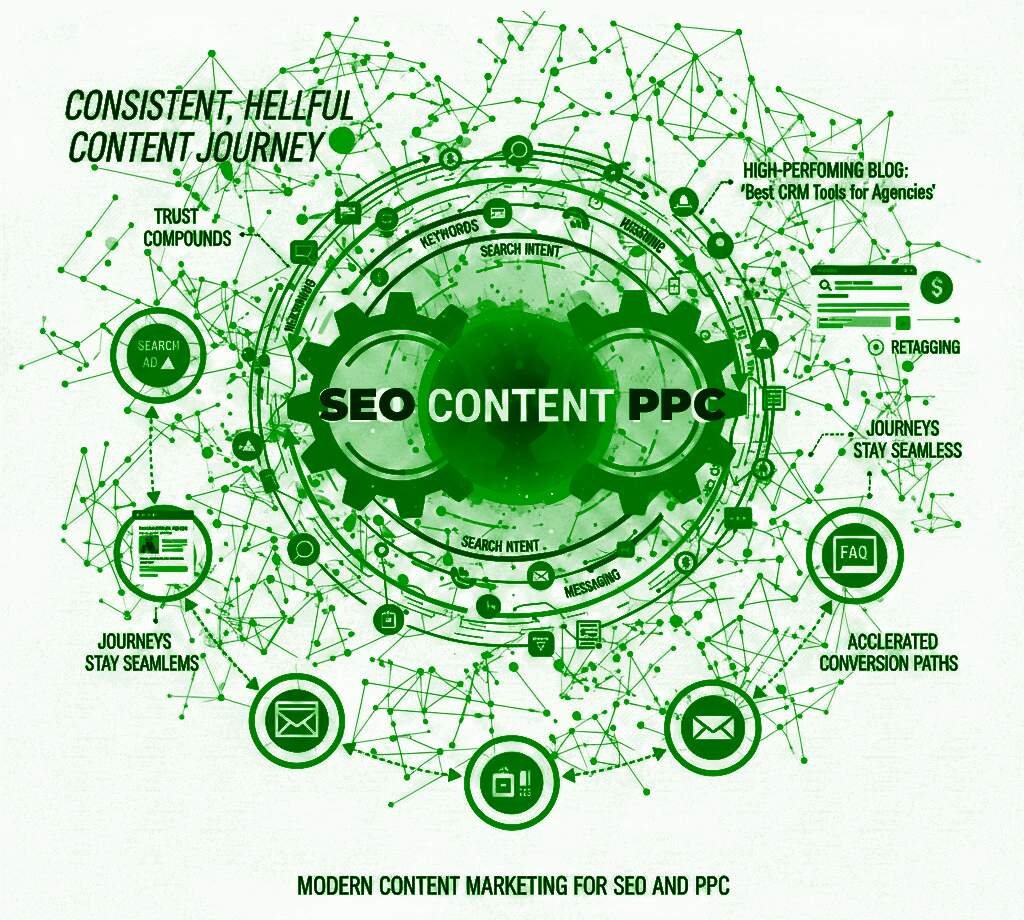
Storytelling: The Secret Ingredient Search Engines (and Humans) Love
Think about your favorite brands. Odds are, you don’t just remember their product—you remember a story they told. Whether it’s an emotional video or that SaaS brand that turned a case study into a cliffhanger, story-driven content sticks. In both SEO and PPC, storytelling turns flat messages into relatable, emotional connections. Consider the difference between “Lower your ad spend today” and “See how you can cut your Google Ads budget in half without losing leads.” One speaks only of cost.
The other tells a transformation story—resonating, persuading, and sticking in the mind long after the click. This is the core of human-first marketing—talking like a person, not a brand brochure. When your content feels less like a pitch and more like a journey, readers stay longer. They engage deeper and convert better. Blending storytelling into your SEO pages, blog intros, and even Google Ads strengthens Content Marketing in SEO & PPC, improving engagement across the board and supporting your broader marketing funnel.
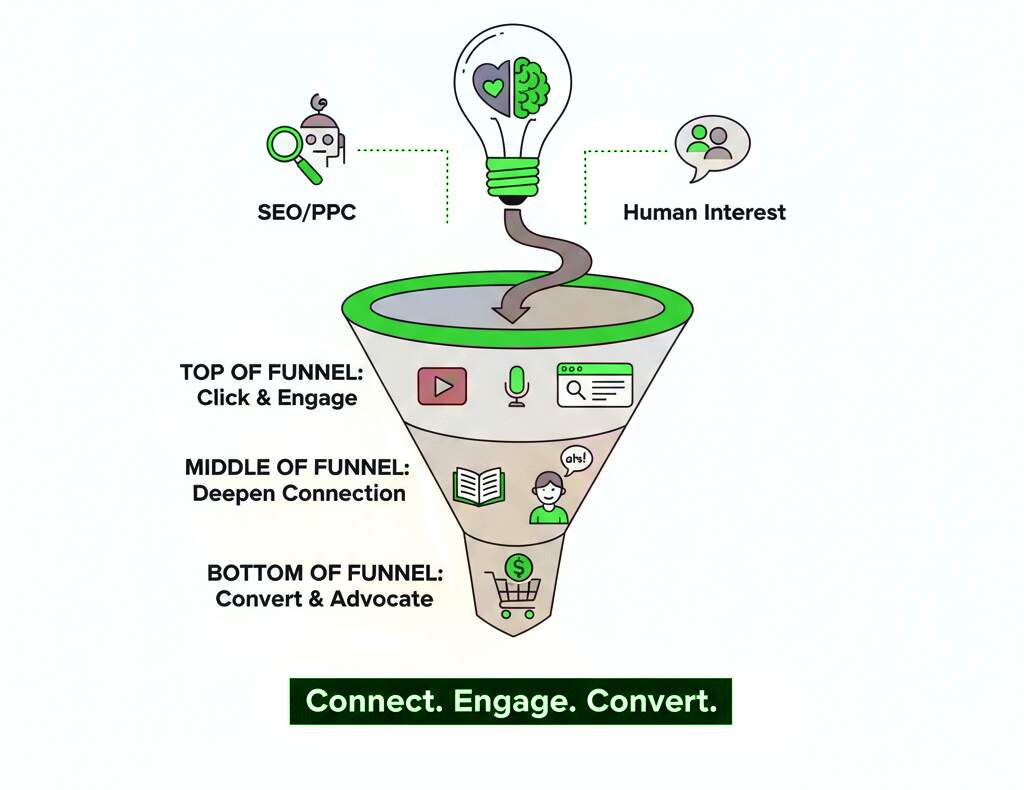
What the Numbers Say (Because Data Doesn’t Lie)
While storytelling sparks emotion, data seals the deal. In today’s digital world, creativity may win the click, but numbers prove long-term value. Data shows which strategies actually lower costs, boost visibility, and drive measurable growth. Without proof, marketing feels like guesswork—but with the right metrics, it becomes a predictable engine for success. Here’s what leading studies tell us:
- Businesses that blog consistently get 67% more leads than those that don’t, proving the compounding power of ongoing content creation.
- High-Quality Score ads—backed by relevant content—can reduce CPC by as much as 50%, turning great copy and landing page relevance into real savings.
- Combining SEO and PPC increases brand visibility by up to 80% compared to one-channel efforts, showing how integration maximizes reach and authority.
This isn’t theory—it’s performance backed by numbers. And the common thread in every state? Content. When you write to educate and convert, you don’t just increase traffic—you improve outcomes. That’s why companies investing in content marketing for SEO and PPC aren’t just making noise—they’re making measurable progress.
Tweet This: Content isn’t theory—it’s performance. 67% more leads from blogging, 50% lower CPC from Quality Score ads, and 80% more visibility from SEO + PPC together.
#SEO #PPC #ContentMarketing
Where to Focus: 5 Practical Moves That Align SEO + PPC Content
Aligning SEO and PPC content doesn’t mean starting over—it’s about connecting strategies more intelligently. With the right adjustments, both channels can fuel each other for stronger results. By aligning insights, keywords, and user intent, you create a seamless path that drives traffic, builds trust, and maximizes conversions across campaigns.
Try these now:
- Use PPC insights (best-converting keywords) to guide blog topics and Meta titles. This ensures your organic content is fueled by proven user intent, maximizing both visibility and engagement.
- Repurpose top blog headlines into Google Ads with emotional CTAs. Leveraging content that already resonates boosts ad performance and lowers testing costs.
- Sync product/service pages with blog content to build topic clusters. This strengthens topical authority and improves internal linking for better SEO results.
- Include FAQ-style content on landing pages to improve SEO and ad relevance. Answering common questions upfront builds trust and reduces bounce rates instantly.
- Use heatmaps and scroll data from SEO content to improve landing page UX. Applying these insights makes pages more intuitive, increasing time-on-site and conversions.
By aligning SEO and PPC, you gain more than traffic—you shape the entire customer journey. From the first click to the final conversion, consistent content ensures trust, clarity, and relevance, turning scattered campaigns into one powerful, performance-driven narrative. 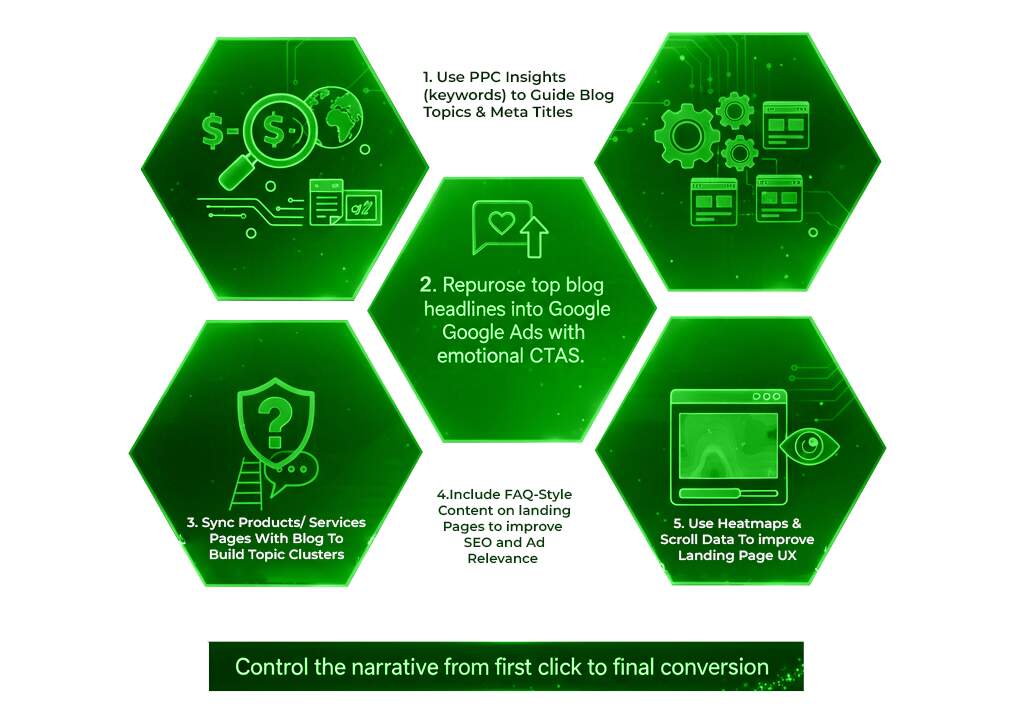
Funnel-First Thinking: Create Content for Every Step
Most brands pour energy into TOFU blogs or BOFU offers, but neglect the middle funnel—the decision-making stage where real buying intent takes shape. The solution? A funnel-first content plan that supports both SEO and PPC efforts.
What to create at each stage:
- Top of Funnel (TOFU): Create educational content like blogs or guides to attract new audiences and build awareness around a problem or topic. This content should spark curiosity and introduce your brand as a trusted source of insights.
- Middle of Funnel (MOFU): Provide comparative content and case studies that help prospects evaluate solutions and build trust in your expertise. Adding proof points here reduces doubts and strengthens confidence in your offering.
- Bottom of Funnel (BOFU): Deliver persuasive content like testimonials, demos, or offers to drive final conversion and close the sale. Clear CTAs paired with reassurance at this stage can significantly improve conversion rates.
Use your PPC ad copywriting to promote mid- and bottom-funnel content—not just homepage links. And ensure your SEO content strategy builds a path from curiosity to consideration.
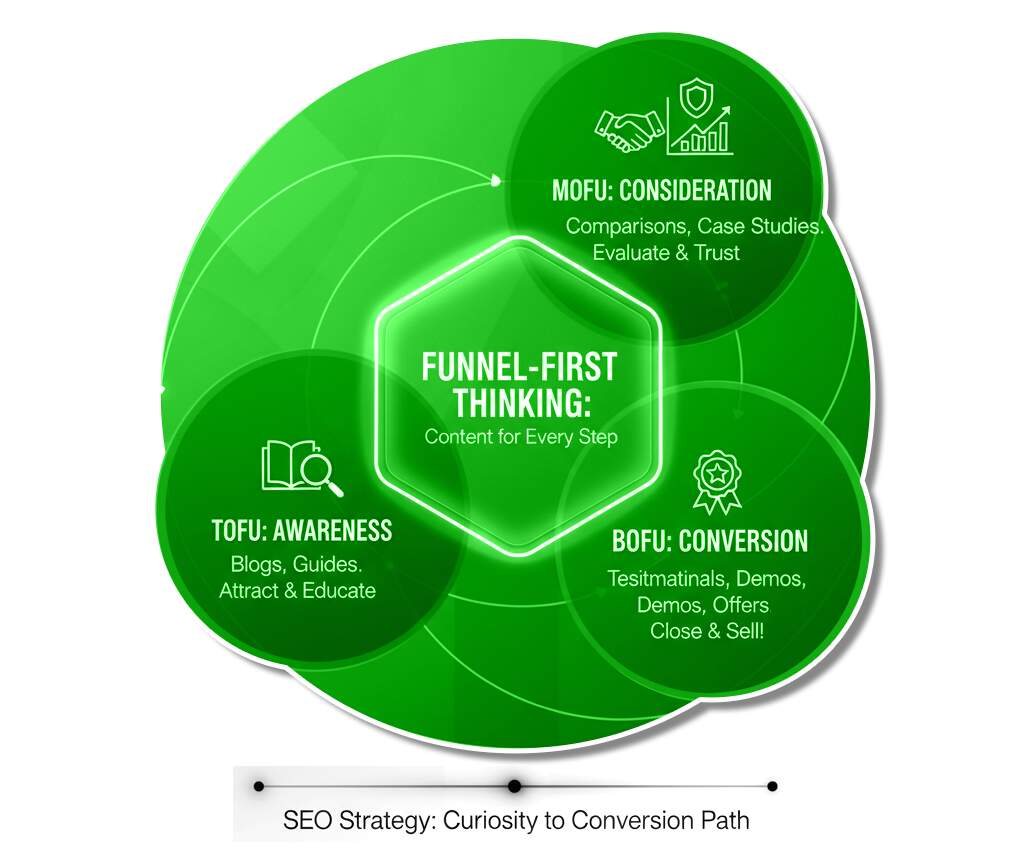
Overview: Align, Don’t Choose—SEO + PPC + Content Wins
At the end of the day, it’s not about choosing between organic and paid—it’s about making both work harder through the power of content. Whether you’re optimizing blog posts for long-term search or crafting ad headlines that convert in seconds, it all starts with a cohesive content strategy.
By embracing content marketing for SEO and PPC, you’re building a smarter, more predictable marketing engine—one that doesn’t rely on hacks or high bids but on clarity, consistency, and connection.
So the next time a team member asks, “Do we focus on ads or SEO this quarter?”—you’ll have the perfect answer: Both. But only when built on content that truly works—content that aligns with user intent, inspires action, and fuels measurable, consistent growth.
Smarter Marketing Starts with Content
Why waste money on disconnected campaigns? With eSign Web Services, you get a unified SEO + PPC content strategy that educates, converts, and scales. Let’s transform your marketing into a growth engine built on content that works. Stop wasting budget on disconnected campaigns. Let’s build an SEO + PPC content engine that lowers costs, boosts ROI, and drives growth. Request your free quote today.  Â
Frequently Asked Question (FAQs)
1. How does content improve Quality Score in PPC campaigns?
Content improves Quality Score by aligning ad copy with relevant, helpful landing pages. When search intent matches content and user experience is smooth, ads become more relevant, boosting scores and lowering CPCs.
2. Can SEO content strategy reduce PPC ad spend?
Yes. By ranking organically for competitive keywords, you reduce reliance on paid clicks. High-performing SEO content also strengthens landing pages, improving ad relevance and Quality Scores, which lowers overall PPC costs.
3. What role does audience research play in content marketing for SEO and PPC?
Audience research reveals pain points, language, and intent. By tailoring both blog posts and ad copy to match these insights, you improve engagement, relevance, and conversions across organic and paid campaigns.
4. Should I use the same keywords in SEO and PPC campaigns?
Not always. Some keywords perform better organically, while others convert faster in ads. Use PPC data to test and refine keywords, then balance high-value terms across both channels for maximum visibility and ROI.
5. How can storytelling enhance PPC performance?
Storytelling makes ad copy feel personal and relatable. Instead of promoting a feature, ads highlight transformation—how the product solves problems. This emotional pull boosts click-through rates and helps ads stand out in crowded search results.
6. What metrics should I track to measure success in SEO + PPC content marketing?
Track organic rankings, Quality Scores, CTR, bounce rates, and conversion rates. Together, these reveal how content fuels performance across channels, showing if your strategy attracts, engages, and converts efficiently.
7. How long does it take to see results from SEO + PPC content marketing?
Results from SEO + PPC content marketing vary: SEO usually takes 3–6 months to show strong ranking improvements, while PPC delivers instant visibility and insights. Together, they balance quick wins with sustainable growth, creating both immediate impact and long-term ROI.
Â


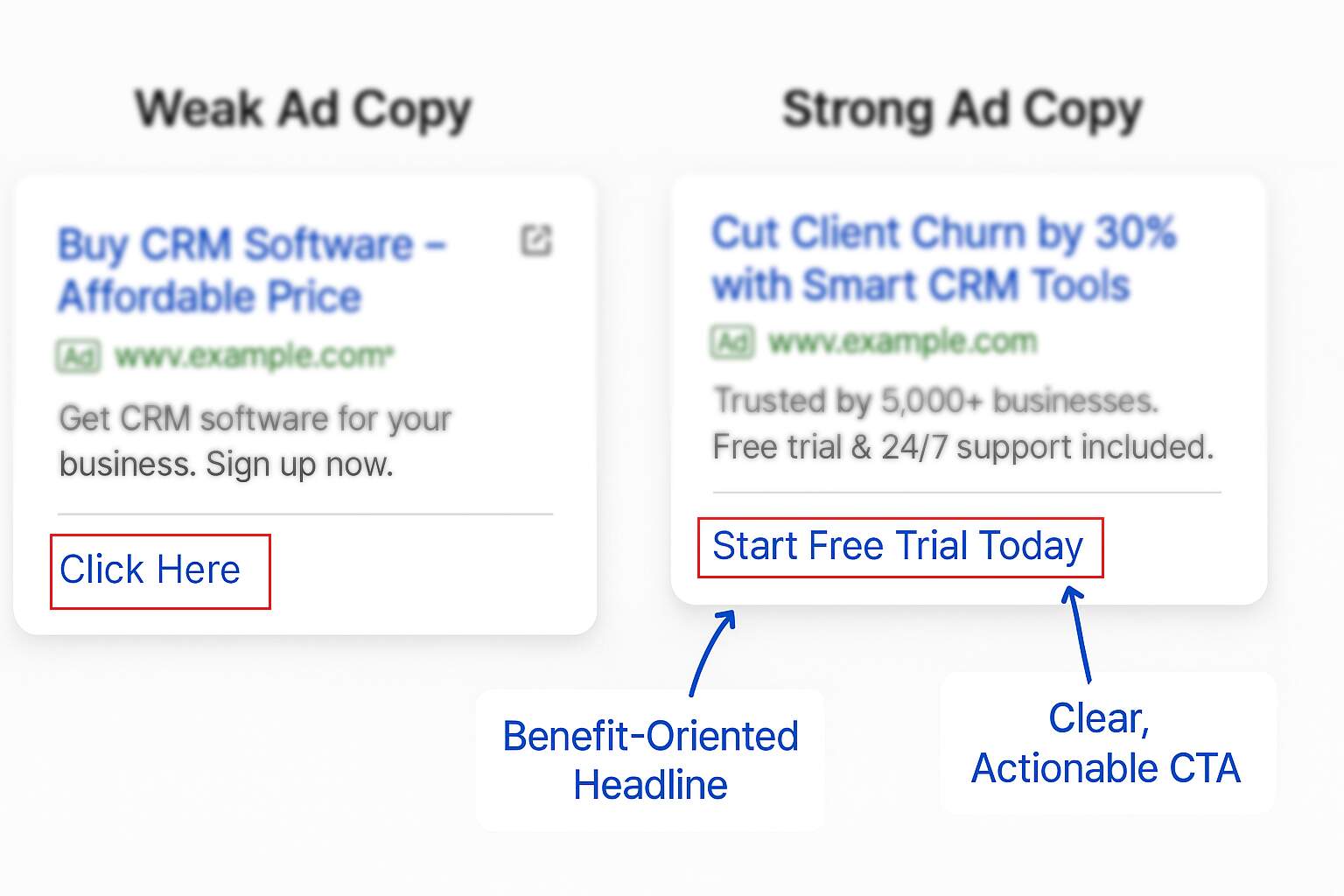 When SEO & PPC Work Together, Content Makes It Happen
When SEO & PPC Work Together, Content Makes It Happen